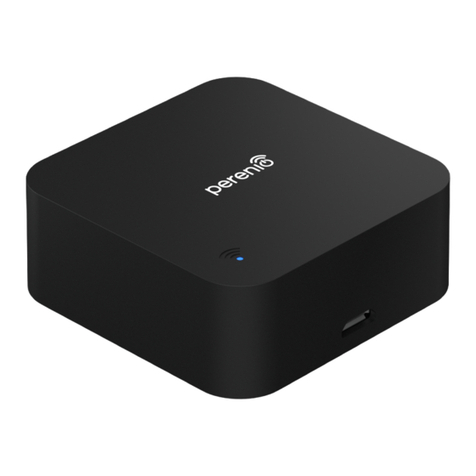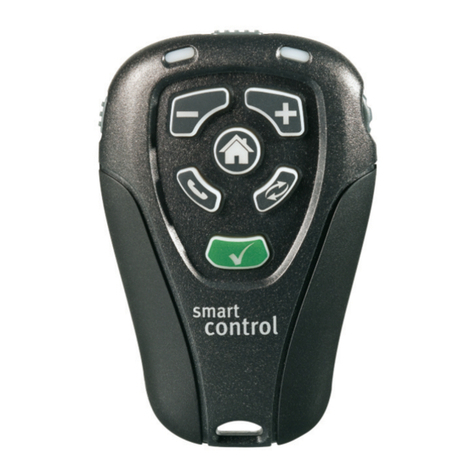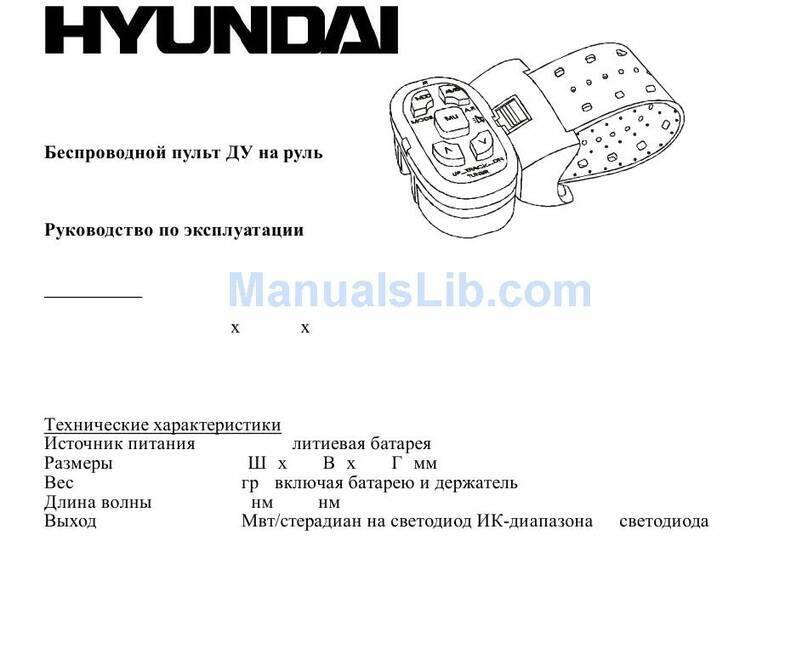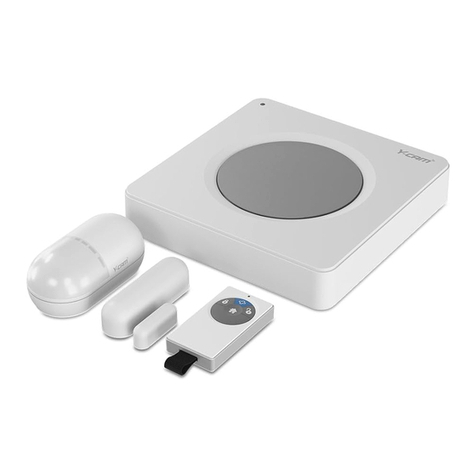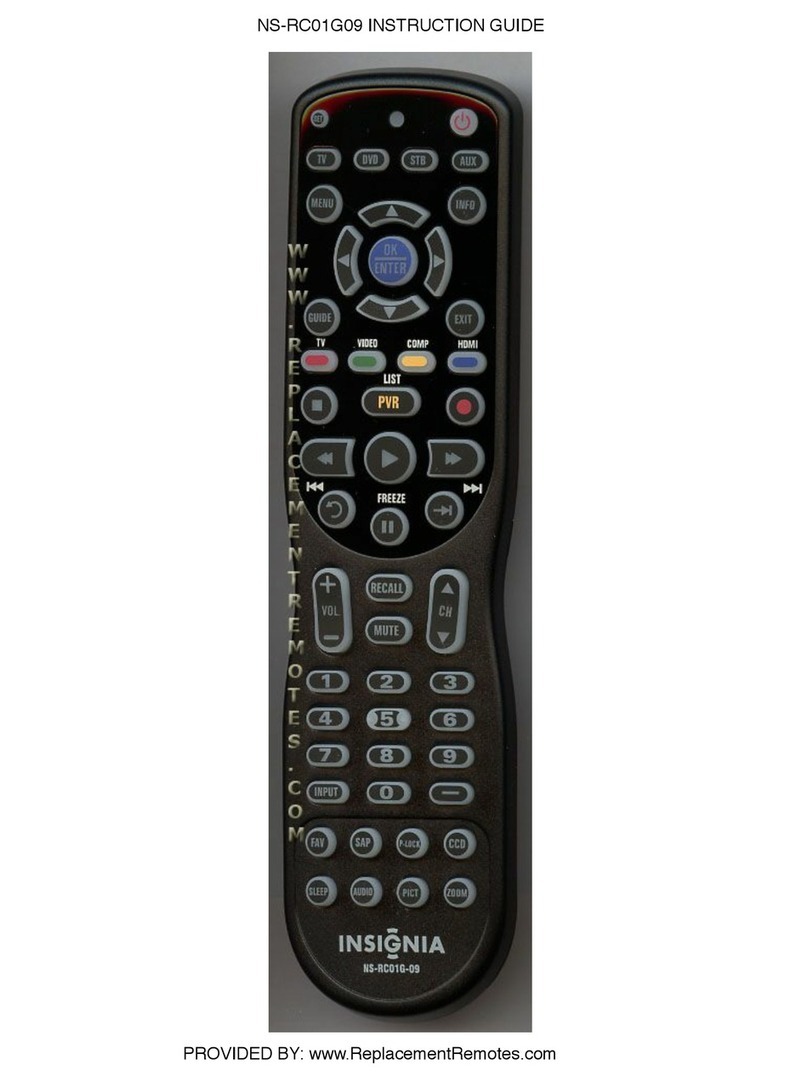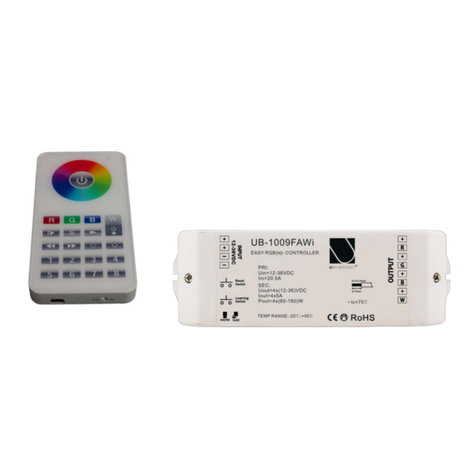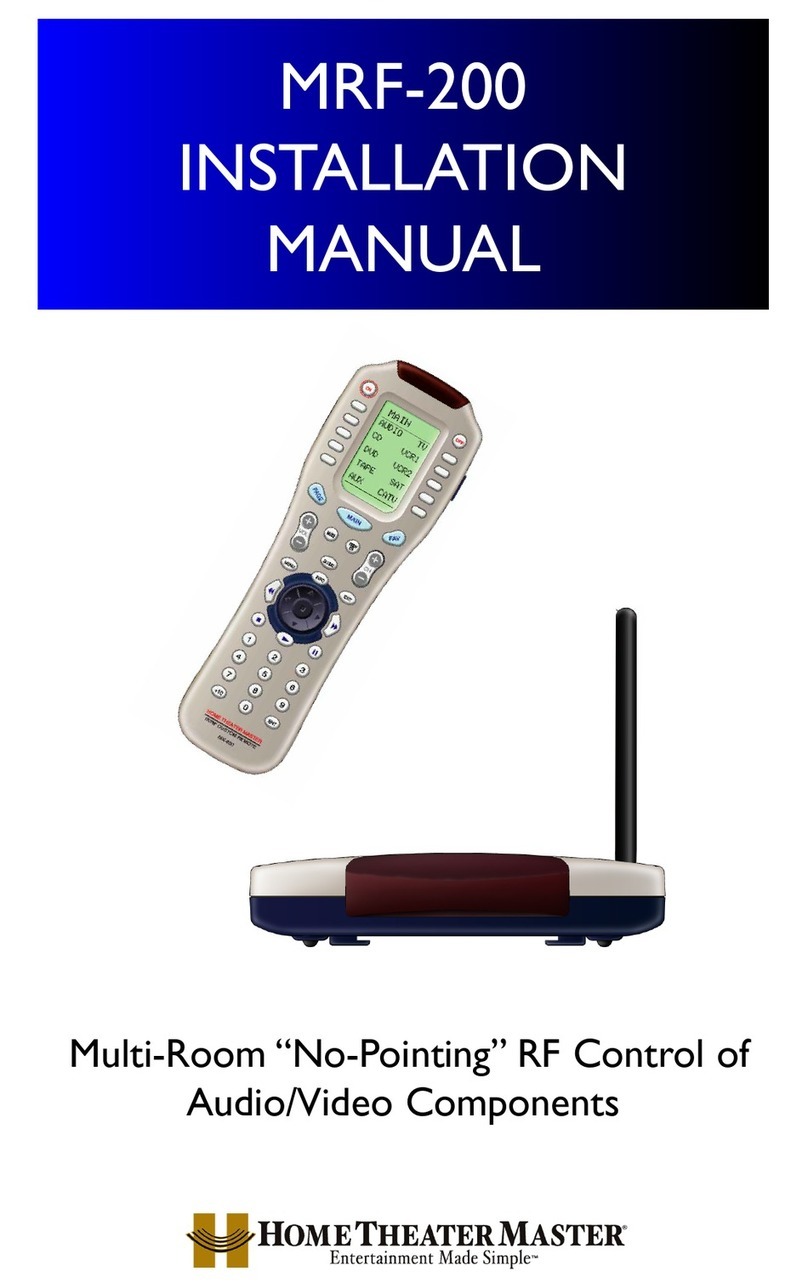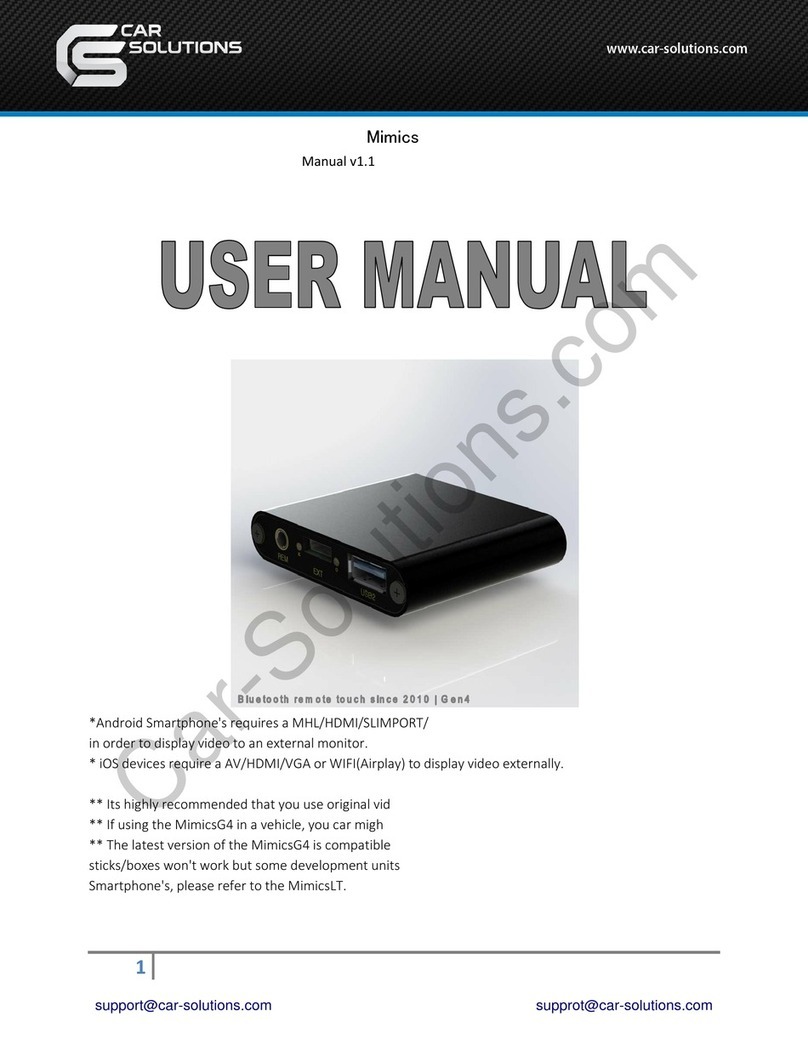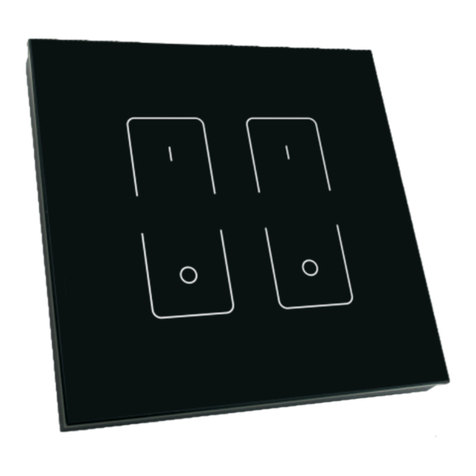BERGONZONI RCL T2FM Radio Set User manual

RCL - T2FM Radio Set
RCL-T2FM
The RCL brandname is part of the Bergonzoni Group
Il Marchio RCL fa parte del Gruppo Bergonzoni
Die RCL markname ist teil der Bergonzoni Gruppe

INSTRUCTION MANUAL
RADIO SET RCL-T2FM
English

Thank you for purchasing a RCL -T2FM.
Before using your RCL -T2FM, read this manual carefully and
use your R/C set safely.
After reading this manual, store it in a safe place.
-No part of this manual may be reproduced in any form without prior permission.
-The contents of this manual are subject to change without prior notice.
-This manual has been carefully written. Please write to RCL if you feel that any corrections or clarifications
should be made.
-RCL is not responsible for the use of this product.
APPLICATION, EXPORT, AND RECONSTRUCTION
1. This product may be used for models only.
The product described in this manual is subject to regulations of the Ministry of Radio/Telecommu-
nications and is restricted under Chinese law to such purposes.
2. Exportation precautions
(a) When this product is exported from China, its use is to be approved by the Radio Law of the
country of destination.
(b) Use of this product with other than models may be restricted by Export and Trade Control Regu-
lations. An application for export approval must be submitted.
3. Modification, adjustment, and replacement of parts
Futaba is not responsible for unauthorized modification, adjustment, and replacement of parts of this
product.
THE FOLLOWING STATEMENT APPLIES TO THE RECEIVER (FOR U.S.A.)
This device complies with part 15 of the FCC Rules. Operation is subject to the following two
conditions:
(1) This device may not cause harmful interference, and
(2) This device must accept any interference received, including interference that may cause
undesired operation.
Warning: This product contains a chemical known to cause cancer and birth defects (or other
reproductive harm).
English

Before Operation ........................................................................ 6
System Contents............................................................................................................................. 6
Nomenclature / Handling............................................................................................................. 7
Assembly / Adjustment .............................................................. 9
Receiver And Servo Connection................................................................................................. 9
Assembly Precautions ................................................................................................................. 1 0
Digital Proportional Adjustment.............................................................................................. 12
Safety Precautions ...................................................................... 2
Of Symbols .................................................................................................................... 2
Running Preparations Safety Precautions................................................................................ 2
Running Safety Precautions......................................................................................................... 3
Storage And Disposal Safety Precautions................................................................................ 4
Other Safety Precautions............................................................................................................. 5
Description Of Functions ......................................................... 13
Steering Trim ............................................................................................................................... 13
Throttle Trim ............................................................................................................................... 13
Servo Reverse ............................................................................................................................... 13
Steering EPA ............................................................................................................................... 14
Throttle EPA ............................................................................................................................... 14
Steering D/R ............................................................................................................................... 14
Reference ................................................................................... 16
Ratings ............................................................................................................................... 16
Troubleshooting............................................................................................................................ 17
Table Of Contens
English

For your safety as well as that of others. Please read this manual thoroughly prior to instal-
lation and operation of your digital proportional R/C system.
The following defines the symbols used in this manual.
Explanation Of Symbols
Warning
Indicates a procedure that could result in serious injury or death to the user
or other persons if ignored and not performed properly.
Caution
Indicates a procedure that may result in serious injury to the user or other
persons, as well as physical damage. If ignored and not performed properly.
Safety Precautions
Explanation Of Graphic Symbols
Indicates an operation that prompts a warning (including Caution).
Indicates an operation that must not be performed.
Indicates an operation that always must be performed.
Caution
(When using a Ni-cad battery to power your system)
When the charger is not in use, disconnect from the outlet.
To prevent accidents, overheating and short circuits.
Running Preparations Safety Precautions
Warning
(When using a Ni-cad battery to power your system)
Charging
When using a Ni-cad battery to power your system, always charge and check the
battery voltage prior to operation.
Should the battery discharge below the minimum voltage level, control will be lost.
English

Running Safety Precautions
Warning
Conduct Tests
Prior to operation always preform a range test.
Even one abnormality in the R/C system may cause loss of control.
[Range Test Procedure]
Have a friend hold the model, or place on a stand where the wheels or prop can not
come in contact with any object. Collapse the transmitter antenna and operate from a
distance of about 10 yards. Be sure to check the movement of each servo to make
sure they follow the movement of the steering wheel and throttle trigger. If the servos
do not follow the commands from the transmitter or any type of interference is de-
tected, Do Not operate the model.
Fully extend the transmitter antenna.
If the transmitter antenna is not fully extended range will be reduced and control may
be lost.
Prohibited
Do not operate two or more models on the same frequency at the same time.
Operation of two or more models on the same frequency at the same time will cause
interference and loss of control of both models.
AM, FM and PCM are different methods of modulation. Nonetheless the same fre-
quency can not be used at the same point in time, regardless of the signal format.
Do not operate outdoors on rainy days
Never operate in the rain or run through puddles.
The transmitter, receiver, batteries and most servos, and speed controls are not wa-
terproof. Contact with any type of moisture or immersion in water or snow will cause
damage along with possible loss of control. Should any type of moisture enter any
component of the system immediately stop using the R/C system and return to our
service center for inspection.
Prohibited
Do not operate when visibility is limited.
Should you loss sight of the model a collision or other dangerous situation may occur.
Prohibited
Do not operate near people or roads.
Do not operate near high tension power lines or communication broadcasting anten-
nas.
Prior to the operation of any model be sure the area you plan to use is safe. Be aware
of all object that may be in the path of your model. Do not operate the model where
people or any type of moveable object could stray in the path of your model. Control
loss due to interference, component failure, loss of sight or low battery voltage could
result in serious injury to yourself and others as well as damage to your model.
Prohibited
Do not Operate your R/C system within 1 mile of another site where radio control
activity may occur.
Interference from other R/C systems will cause loss of control.
English

Prohibited
Do not operate when you are tired, not feeling well or under the influence of alcohol or
drugs.
Your judgement is impaired and could result in a dangerous situation that may cause
serious injury to yourself and others.
Before you turn on the power switch on the transmitter, always check to see that the
trigger is at the neutral position. Always turn the transmitter on first, then the receiver.
When you turn the system off, always turn the receiver off first then the transmitter.
This step is very important always follow this procedure.
If this procedure is not followed, injury to yourself and others as well as loss of control
could occur.
Adjustment Note
Make all adjustments to the radio control system with engine not running, or the elec-
tric motor disconnected.
If the engine is running or the motor is connected while adjustments are made the
model may run out of control.
Remove the main battery source from electric powered models when they are not
being used.
Should you accidently leave the receiver switch on the model could run out of control.
Caution
Do not touch
Do not touch the engine, motor, speed control or any part of the model that will gener-
ate heat while running.
Touching hot parts will result in serious burns.
Storage And Disposal Safety Precautions
Warning
(When using a Ni-cad battery to power your system)
At the end of a days operation store the system with Ni-cad battery discharged. Be
sure to recharge the system before it is used again.
You should fully discharge your systems batteries periodicity to prevent a condition
called "memory". For example if you only make two run in a day or you regularly use a
small amount of the batteries capacity, the memory effect can reduce the actual ca-
pacity even if the battery is charged for the recommended amount of time.
Prohibited
Do not throw a Ni-cad battery into a fire. Do not disassemble or attempt to repair a Ni-
cad battery pack.
Overheating, damage and acid leakage may lead to burns, loss of eye sight as well as
numerous other types of injuries. The electrolyte in Ni-cad batteries is a strong alkali.
Should you get even the smallest amount of the electrolyte in your eyes, Do Not rub,
wash immediately with water, seek medical attention at once. The electrolyte can
cause blindness. If electrolyte comes in contact with your skin or clothes, wash with
water immediately.
English

Other Safety Precautions
Caution
When operating two or more models at the same time, have a third person act as a
spotter. They will be in charge of safety and you should follow their instructions.
Beginners should receive instructions regarding safety and operation from an experi-
enced modeler.
Use genuine RCL parts only.
Always use only genuine RCL receiver, servos , electronic speed controls along with
other optional parts and components.
RCL will not be held responsible for damages caused by other than genuine
parts and components. Use only genuine
RCL
parts and components listed in the
instruction manual and catalog.
(When using a Ni-cad battery to power your system)
Prohibited
Do not short circuit the Ni-cad battery terminals.
Short circuiting the terminals will lead to sparks and overheating and could cause a fire
and burns as well.
Caution
Prohibited
Do not store your R/C system where it will be exposed to the following conditions.
• Extreme heat or coldness
• Exposed to direct sunlight
• Where humidity is high
• Where vibration is prevalent
• Where dust is prevalent
• Where there is steam and condensation
• Where the system would be exposed to engine exhaust
Storing your R/C system under adverse conditions could cause deformation and nu-
merous other problems with operation.
(When using a Ni-cad battery to power your system)
Caution
When disposing Ni-cad batteries, cover any exposed contacts with some type of insu-
lation to prevent short circuit.
Improper disposal could cause fire.
*Special Note!
Some states require special handling when Ni-cad batteries are disposed. Con-
tact the State Agency responsible for recycling hazardous waste for the proce-
dures in your state.
RCL
English

Before Operation
System Contents
After opening the container, check the contents for the following items. the contents will
vary with the system purchased.
System with
2 Servos for 1:5
System with
2 Servos for 1:8
System with
2 Servos for 1:8 RTR
Transmitter
Receiver
Servo Th.
Servo St.
Switch
Battery Holder
Miscellaneous
RCL-T2FM (x1)
RCL-R2FM (x1)
RCL-S08 (x1)
RCL-SW1 (x1)
RCL-BH4 (x1)
Servo mounting hardware and servo horns
Should any item be missing or you are uncertain of the contents of the system, please
contact the dealer where the unit was purchased.
Receiver RCL-R2FM
Output Connector
"CH.1" : Steering Servo
"CH.2" : Throttle Servo
Power Supply Connector (BATT)
Servo RCL-Sxx
Crystal
Servo Horn Mounting Flange
To Receiver
X'TAL
CH.2
CH.1
BATT
RCL-S08 (x1) RCL-S05 (x1)
RCL-S11 (x1) RCL-S08 (x1) RCL-S05 (x1)
RCL-R2FM
RCL-SW1 (x1) RCL-SW1 (x1)
RCL-BH4 (x1) RCL-BH4 (x1)
RCL-T2FM (x1) RCL-T2FM (x1)
RCL-R2FM (x1) RCL-R2FM (x1)
English

n
o
i
t
a
r
e
p
O
e
r
o
f
e
B
Transmitter GB-T2FM
Nomenclature / Handling
(RCL-T2FM)
Antenna
Trim Panel Cover
Battery Level
Indicator
*Two LED display to indicate
battery voltage level.
*If the Red led flashes, replace
batteries.
*Open the cover by sliding it
to the left.
Steering Trim (P13)
Steering Wheel
Throttle Trigger
Grip Handle
Servo Reversing Switch (P13)
Steering EPA (P14)
Throttle EPA (P14)
Steering D/R (P14)
Power Switch
Throttle Trim (P13)
*When slid upward,
the power is turned on.
*Adjusts the steering in small increments
so the model will run straight.
*Turn model to left or right.
*Adjusts the throttle in small increments
so the model will not move at neutral.
*Control the speed of the model and movement
forward and backward.
RCL-T2FM
English

Handling Procedure For Bat-
teries (8 AA Size Batteries)
(Battery Replacement Method)
1Remove the battery cover from the
transmitter by sliding it in the direc-
tion of the arrow in the figure.
2Remove the used batteries.
3Load the new AA size batteries . Pay
very close attention to the polarity
markings and reinsert accordingly.
4Slide the battery cover back onto the
case.
(Check)
Turn the power switch on the trans-
mitter to the ON position. Check to
see if the two LEDs light.
If the LEDs fail to light, check the
batteries for insufficient contact in the
case or incorrect battery polarity.
Caution
Always be sure you reinsert the bat-
teries in the correct polarity order.
If the batteries are loaded incorrectly , the
transmitter may be damaged.
When the transmitter will not be
used for any short or long period of
time, always remove the batteries.
If the batteries do happen to leak , clean the
battery case and contacts thoroughly. Make
sure the contacts are free of corrosion.
(Battery Disposal)
Some states require special handling
when any type of battery is disposed.
Contact the State Agency responsible
for recycling hazardous waste for pro-
cedures in your area.
(Battery Alarm Display)
When the Green battery level indica-
tor (LED) goes off and the Red LED
flashes, change the batteries immedi-
ately.
OPEN
Red LED Green LED
(Battery Level Indicator)
English

Assembly / Adjustment
Receiver And Servo Connection
As you connect the receiver, servo's and other components, do so in accordance with the
"Assembly Precautions" listed on the next page.
X’TAL
CH.2
CH.1
BATT
Connect the battery in accordance with instructions provided with model you are
installing this system in.
Use the GB-BH4 battery holder to match your application.
If your model has a mechanical type speed control (Servo Driven for electric powered
models) inspect this component for a power supply regulator or voltage dropping Diode.
These device’s will cause a voltage drop to the receiver. Be sure to remove them prior
to installation in your model.
English

Assembly Precautions
Warning
Check
Check the receiver, servos, and battery connectors, to be sure they are firmly con-
nected.
If a connector is not fully inserted, vibration may cause the connector to work loose
while the model is operating. This will result in loss of control.
Check
Operate each servo horn over its full stroke and check to see that the linkage does not
bind or is not too loose.
Excessive force applied to the servo horn by binding or poor installation may lead to
servo problems and cause result in loss of control.
Prohibited
The receiver antenna may seem long. Do not cut or alter from the original length.
If the receiver antenna length is altered, the receiver will be adversely effected. The
receiver will become considerably more susceptible to interference and high fre-
quency noise which will result in loss of range and control.
Installation Note
(Electric Car's and Boat's)
Isolate the receiver from vibration by attaching to the chassis or mounting plate with
thick double sided tape.
(Gas Powered Car's and Boat's)
Isolate the receiver from vibration by wrapping it in foam rubber or similar type cush-
ioning material. Protect the unit from water damage by placing it in a plastic bag or
waterproof radio box.
The receiver contains precision electronic parts. These parts are vulnerable to vibra-
tion and shock. Any contact with moisture (water or condensation) may cause receiver
malfunction and loss of control.
Installation Note
Keep all devises that may omit high frequency noise, such as motor's, batteries, and
wiring that handle heavy current loads, at least 1/2 inch away from the receiver and
receiver antenna.
High frequency noise will cause a decrease in operating range and could cause loss of
control.
Use genuine RCL parts only.
Use only genuine RCL crystal set's as specified in this instruction manual.
The use of other than RCL crystal set's will result in decrease of range as well as
loss of control. There are separate crystal's for the Transmitter and Receiver.
English

Install electronic speed control heat sinks as well as other components that conduct
electricity so they can not come in contact with aluminum, carbon fiber or other mate-
rials that conduct electricity.
If for example the speed control came loose while the model was running and touched
an aluminum chassis a short circuit may occur that would cause irreparable damage to
the system as well as loss of control.
Installation Note
Noise suppression capacitors should be installed on almost all motors.
If the proper capacitors are not installed, high frequency noise will reduce range and
cause loss of control along with various other problems.
Installation Note
Inspect all linkage installations and any point where metal could come in contact with
other metal parts. Make sure these parts do not touch other metal parts under vibra-
tion.
Should a linkage or other metal parts come in contact with other metal parts under
vibration the high frequency noise generated by this contact will cause interference
and possible loss of control.
Caution
Disassembly Prohibited
Do Not disassemble any part of this system that is not specified in the instruction
manual.
RCL will not be responsible for any damage due to improper disassembly of any
part of the radio control system.
English

Digital Proportional Adjustment
*When making these settings adjustments , do so with the motor disconnected
or the engine not running.
Servo Horn Installation Instructions.
1Connect the receiver, servos, and other components and
then turn on the power switches to transmitter and receiver.
2Be sure the Steering trim and Throttle trim on the transmitter
are at their neutral position .
3At this time install the servo horn in the manner
described in the instruction manual provided
with the model this system will be used in.
Both servos will move to the neutral
position.
Reversing The Servo Operation Direction
Should the servo operate in the opposite direction required
for your application, reverse the rotation with the reversing
switch.
(Reversing Switches)
Throttle
N Side: Normal
R Side: Reverse
Steering
N Side: Normal
R Side: Reverse
English

Description Of Functions
Steering Trim
Throttle neutral adjustments can be made moving the throttle
trim to the left or right.
Racers Tip
When using a electronic speed control set the throttle trim
to neutral and make adjustments to the speed control. On
a gas powered model set the trim to neutral and adjust the
linkage to the point where the carburetor is fully closed in
accordance with the engine instruction manual.
Trim Operation and Travel
Trim adjustments will effect the overall servo travel, check the brake side (back-
ward) movement when changes are made.
When trim movement is extreme
If you use most of the trim movement to get the servo to the neutral position , recenter the
servo horn closer to the neutral position and inspect your throttle linkage.
Throttle Trim
Steering neutral adjustments can be made by moving the
Steering trim knob to the left or right.
Racers Tip
When you install a servo always check to be sure the servo is at its neutral position.
Adjust the servo horn hole position and linkage so both are parallel. When a servo
saver is used place it as close to center position as possible. Be sure the steering
trim on the transmitter is at the neutral position.
Trim Operation And Maximum Travel
Changing the trim can effect the overall settings, when adjustments are made with
the trims recheck your installation for maximum servo travel. (Steering EPA right
side and left side).
When Trim usage is extreme
If it takes most of your trim movement to get a servo to
the neutral position, reposition the servo horn or servo
saver on the servo and inspect your linkage installation.
(Drum Type)
(Slide Type)
Carburetor Fully Closed
90 90
Parallel
Servo Saver
Direct Servo Saver Horn
Throttle Trim
Steering Trim
Servo Reverse
This function reverses the rotation direction of the Steering
and Throttle servos.
When the trim position deviates from the center, the de-
viation will be on the opposite side when the servo is
reversed.
(Reversing Switches)
Throttle
N Side: Normal
R Side: Reverse
Steering
N Side: Normal
R Side: Reverse
(T2PH) (T2PHKA)
English

Throttle EPA
Steering D/R
This function is used to adjust the forward and brake side servo travel. Each direction can
be adjusted independent of each other. Use this feature to set the throttle servo travel.
Use this function to adjust the steering travel of your model. If the model understeers
(push) while cornering, add steering by turning the dial clockwise. When the model
oversteers (loose), take away steering by turning the dial counterclockwise.
Warning
Be sure that your throttle linkage does not
apply excessive force to the servo.
If your linkage installation causes an unreason-
able amount of force to be applied to the servo,
the servo may be damaged and result in loss of
control.
Steering EPA
Use this function to limit the servo movement to the left or right. The servo travel to each
side can be independently adjusted. This feature will compensate for any difference in right
or left turning angles or radius due to the characteristics of your model.
Warning
Be sure that the steering linkage does not
bind or come in contact with any suspen-
sion parts or arms.
If unreasonable force is applied to the servo, the
servo may be damaged and result in loss of
control.
0 side: Travel Minimum
10 side: Travel Maximum
Steering EPA
edisthgiRedistfeL
0 side: Travel Minimum
10 side: Travel Maximum
Throttle EPA
ediswoLedishgiH
0 side: Travel Minimum
10 side: Travel Maximum
Steering D/R
English

Reference
Ratings
Transmitter RCL-T2FM
(2 channels, FM transmitter)
Transmitting frequency:
27 MHz
Modulation method: FM
Power requirement:
12V (penlight battery X 8)
Current drain: 250mA
Receiver RCL-R2FM
(2 channels, FM receiver)
Receiving frequency:
27 MHz
Intermediate frequency: 455kHz
Power requirement: 4.8 - 8.4V
Current drain: 30mA (at 4.8V / No signal)
Size: 47.2X33.3X17.3mm
Weight: 16.6g
Servo RCL-S5
(standard servo)
Power requirement:
4.8V or 6V (common with receiver)
Current drain: 8mA (at 6V / Idle)
Output torque: 3.2kg-cm (at 4.8V)
Operating speed: 0.23sec/60 digree (at 4.8V)
Size: 40.4x19.8x36mm
Weight: 37.2g
*Specifications and ratings are subject to change without prior notice.
Servo RCL-S8
(high torque servo)
Power requirement:
4.8V or 6V (common with receiver)
Current drain: 8mA (at 6V / Idle)
Output torque: 3.2kg-cm (at 4.8V)
Operating speed: 0.23sec/60 digree (at 4.8V)
Size: 40.4x19.8x36mm
Weight: 37.2g
Servo RCL-S11
(high torque servo)
Power requirement:
4.8V or 6V (common with receiver)
Current drain: 8mA (at 6V / Idle)
Output torque: 3.2kg-cm (at 4.8V)
Operating speed: 0.23sec/60 digree (at 4.8V)
Size: 40.4x19.8x36mm
Weight: 37.2g
Servo
(high torque servo)
Power requirement:
4.8V or 6V (common with receiver)
Current drain: 8mA (at 6V / Idle)
Output torque: 3.2kg-cm (at 4.8V)
Operating speed: 0.23sec/60 digree (at 4.8V)
Size: 40.4x19.8x36mm
Weight: 37.2g
Servo
(high torque servo)
Power requirement:
4.8V or 6V (common with receiver)
Current drain: 8mA (at 6V / Idle)
Output torque: 3.2kg-cm (at 4.8V)
Operating speed: 0.23sec/60 digree (at 4.8V)
Size: 40.4x19.8x36mm
Weight: 37.2g
English

If your digital proportional R/C set does not operate, its range is short, it intermit-
tently stops operating, or it operates erroneously, take the action shown in the table
below. If this does not correct the trouble, please contact a RCL official dealer.
Check point Check item Action
Transmitter/receiver
battery
Dead battery.
Incorrect loading.
Faulty contact con-
nection.
Dirty contacts.
Replace the battery. Charge the nicd
battery.
Reload the batteries in the correct
polarity.
If the contact spring is deformed,
correct it.
Wipe with a dry cloth.
Transmitter antenna Loose.
Not extended to full
length.
Screw in.
Extend fully.
Crystal Disconnected.
Wrong band.
Different from specifi-
cation.
Push in.
Match transmitter/receiver band.
Replace with specified crystal.
Connector connection Incorrect wiring.
Disconnection.
Reinsert.
Push in.
Receiver antenna Close to other wiring.
Not cut?
Not bundled?
Separate from other wiring.
Request repair.
Install in accordance with instruction
manual.
Servo linkage Binding or looseness Adjust at the model side.
Motor Noise countermea-
sures.
Install a noise absorbing capacitor.
Troubleshooting
© RCL 2007
English

MANUALE D’INSTRUZZIONE
RADIOCOMANDO RCL-T2FM
Italiano
Table of contents
Languages:
Popular Remote Control manuals by other brands
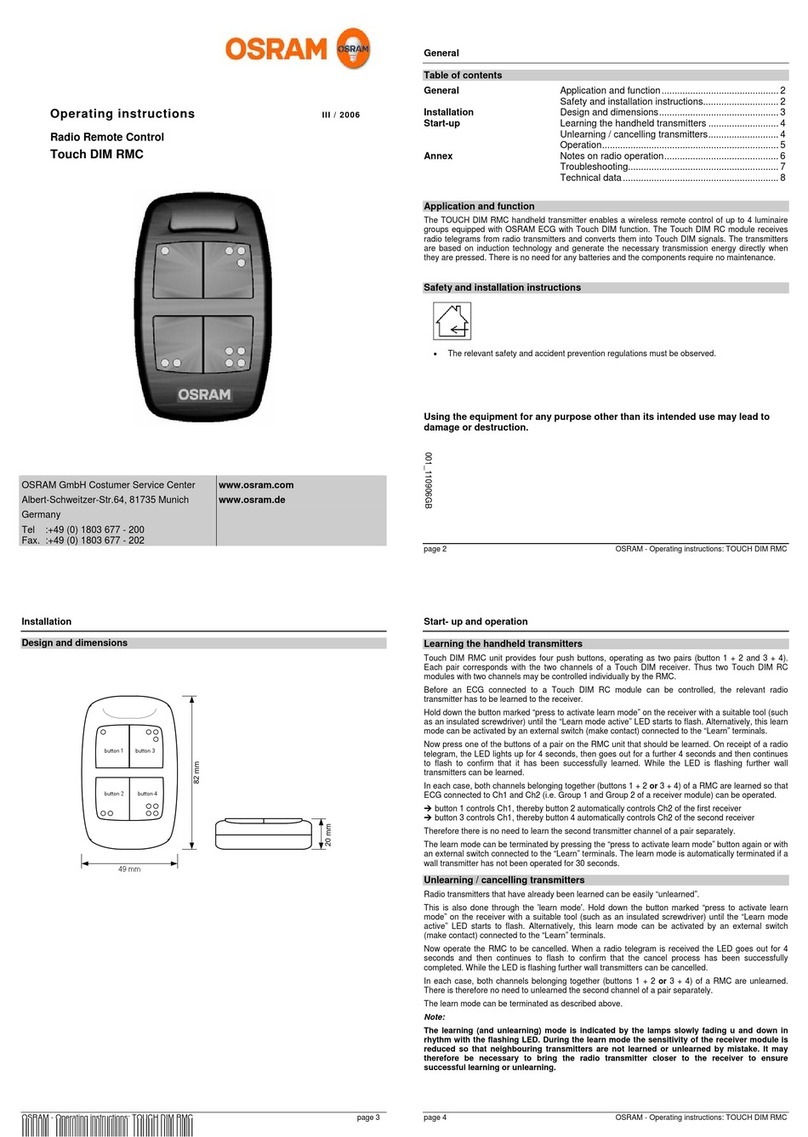
Osram
Osram Touch DIM RMC operating instructions
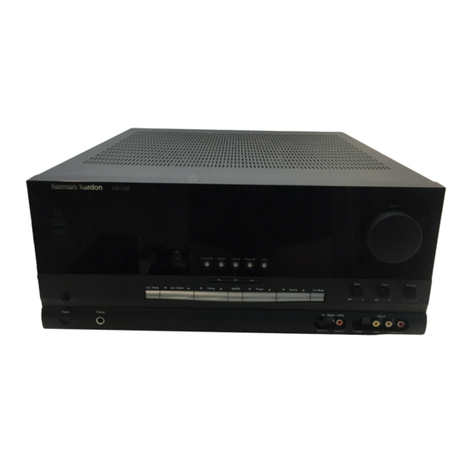
Harman Kardon
Harman Kardon AVR 7200 brochure

Crayola
Crayola AL-CTLR-RGBW-4CP installation guide
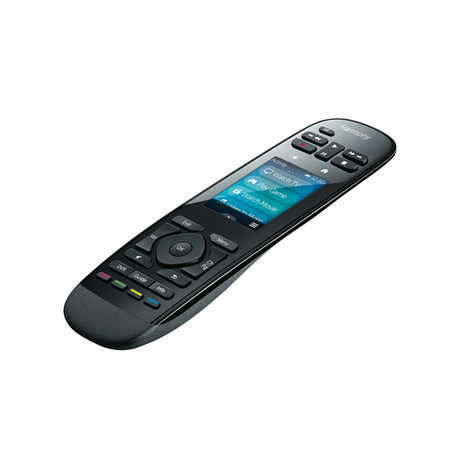
Logitech
Logitech Harmony Ultimate Hub user guide

Samsung
Samsung EIRC200 quick start guide
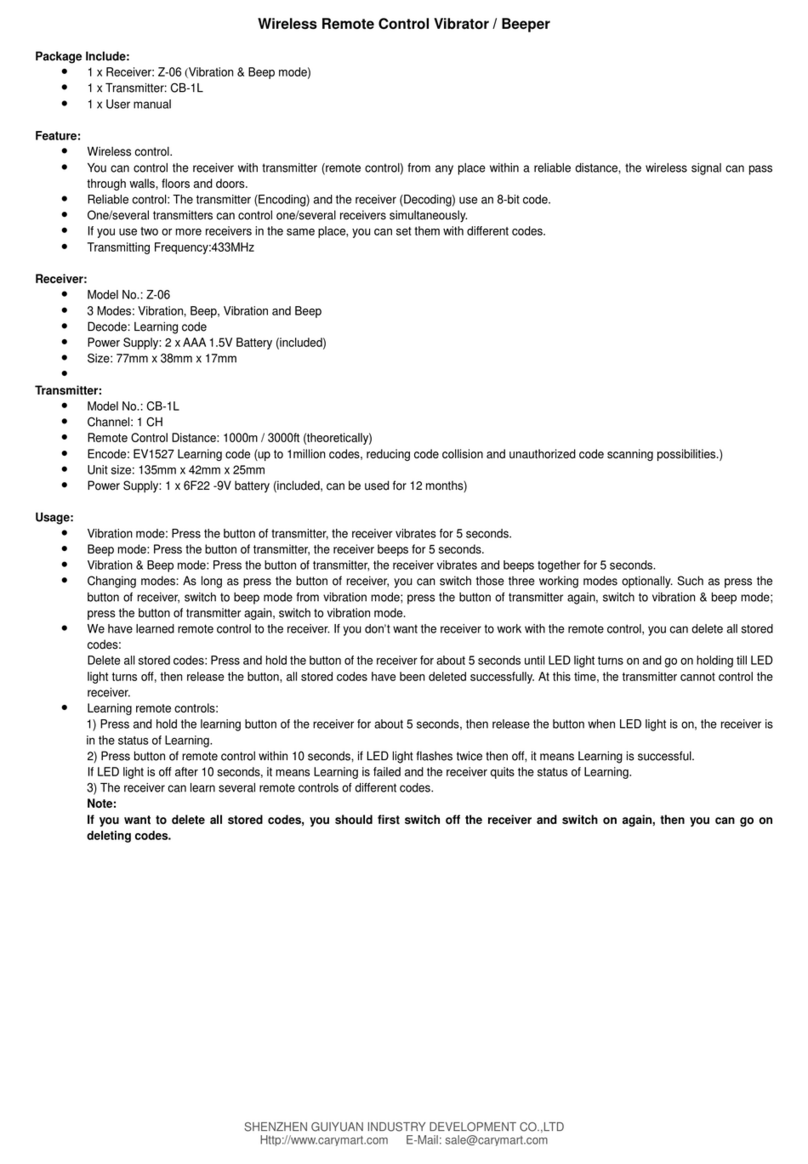
Flying Industry Development
Flying Industry Development Z-06 quick guide


